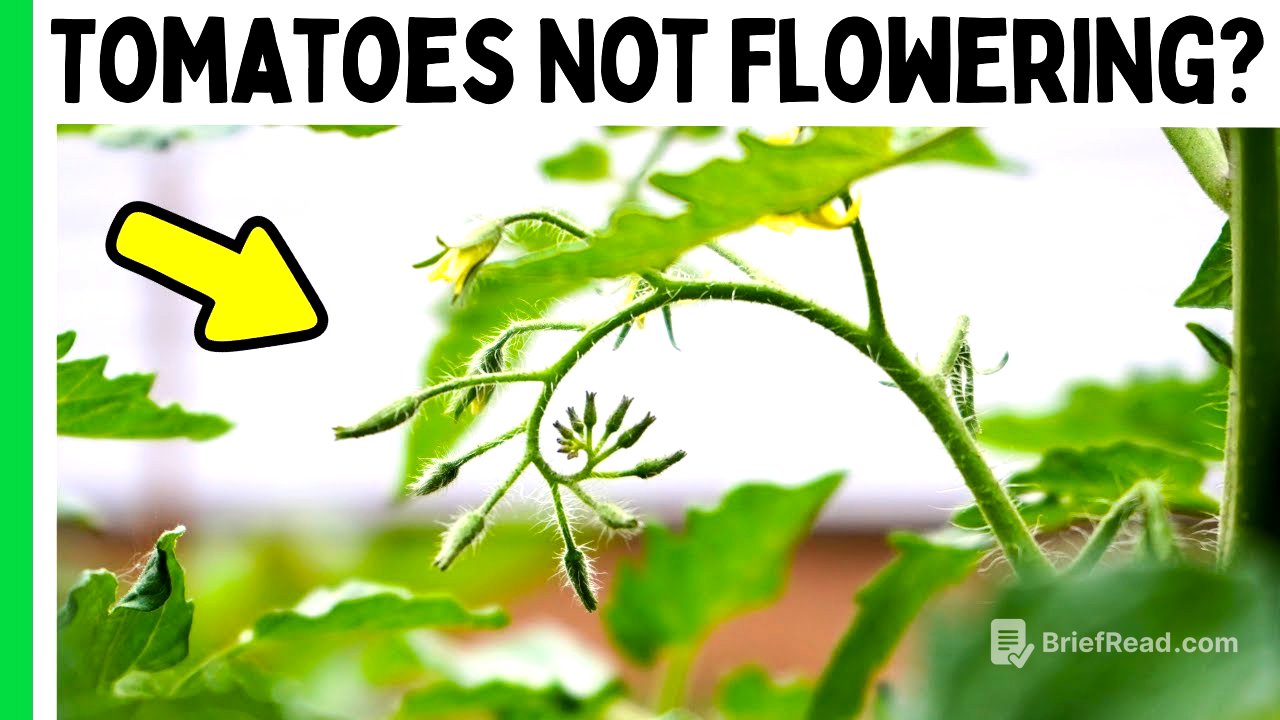TLDR;
This video explains why tomato plants may not be flowering or why their flowers might be falling off, which are critical issues for gardeners. It covers three main reasons: temperature, nitrogen overload, and humidity. The video emphasizes the importance of understanding these factors to ensure successful tomato production.
- Temperature: Maintaining optimal temperatures (70-85°F during the day and 55-70°F at night) is crucial.
- Nitrogen Overload: Too much nitrogen early in the plant's life can hinder flowering.
- Humidity: Ideal humidity levels (40-70%) are necessary for proper pollination.
Introduction to Tomato Flowers [0:00]
The video introduces the importance of tomato flowers for fruit production, highlighting that the primary goal of growing tomato plants is to harvest tomatoes. Tomato plants are self-fertile, meaning they don't require multiple plants for fertilization, making them easy to grow even in isolation. Typically, tomato flowers begin to appear around 4 to 6 weeks after transplanting. The timing of flowering and fruit production can vary depending on the tomato variety (determinate or indeterminate) and the local climate.
Temperature Issues [1:21]
Temperature is a critical factor affecting tomato flower formation and retention. Tomatoes thrive in daytime temperatures between 70 and 85°F and nighttime temperatures between 55 and 70°F. High temperatures (above 85°F during the day and not dropping below 70°F at night) can cause plants to postpone flowering and drop existing flowers. Similarly, low temperatures (below 55°F overnight) can also lead to flower drop. Using shade cloth on sunny days above 90°F can help mitigate high temperatures, improving the quality and yield of the plants.
Nitrogen Overload [2:47]
Nitrogen overload, especially early in the plant's growth, is a common issue that prevents flowering. Initially, tomatoes need nitrogen and phosphorus to establish strong roots and branch out. Once flowering begins, the plant requires more potassium. Too much nitrogen early on can cause excessive foliage growth, hindering the transition to the flowering stage. For container plants, using an all-purpose fertilizer with a ratio around 2-1-3 is recommended. For in-ground plants, a soil test is advised to determine the precise nutrient needs and avoid over-fertilization. Mature, flowering plants still need nitrogen, but maintaining the correct balance with potassium and calcium is essential.
Humidity Levels [4:54]
Humidity affects pollination and fertilization in tomato flowers. The ideal relative humidity for tomatoes is between 40 and 70%. High humidity (above 70%) can cause pollen to stick within the flower, preventing it from reaching the stigma. Low humidity (below 40%) can dehydrate pollen grains, also interfering with fertilization. Pruning the plant to improve airflow can help reduce humidity in especially humid microclimates. Selecting tomato varieties suited to the local climate is also crucial for success.
Additional Resources and Conclusion [6:41]
For more information on other possible reasons for tomato flower drop, the video directs viewers to an article on the Geeky Greenhouse website. The video concludes by encouraging viewers to sign up for the newsletter to receive a free tomato-growing ebook.









